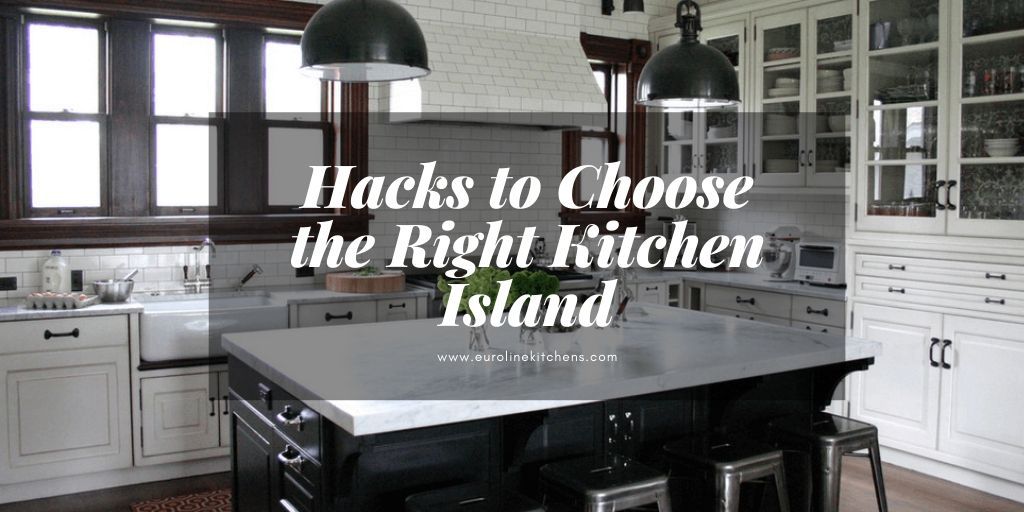A kitchen island becomes the focal point of any home’s cooking area owing to its size and the activities taking place around it. As it influences the overall beauty and functionality of the space, it should be designed and structured carefully. Its size, the materials used in its construction, position and shape are all important factors in determining the most suitable choice during kitchen renovation or remodelling. If you are upgrading your kitchen island to give the room a facelift, consider these factors before anything else.
What Is a Kitchen Island?
A kitchen island is a versatile space whose purposes range from food preparation and eating to doubling as a homework and crafts zone for your kids. Depending on how much space you have, you can install a permanent structure or opt for a temporary one. Alternatives to islands include utility tables and kitchen carts.
Types of Kitchen Islands
The following are popular types of kitchen islands:
- Freestanding furniture island
These are most suitable for renters or those with limited kitchen floor space. Affordable and easy to add to your existing one, these types of islands provide additional counterspace for larger kitchens. Freestanding kitchen islands come in different materials, styles and colours. - Cabinet kitchen islands
If you are remodeling your kitchen and have the space, constructing an island is a smart decision. These are suitable for homeowners who wish to customize their sinks and beverage centres. They are comparatively more expensive than the freestanding design but add to your home’s resale value.
Shapes of Kitchen Islands
Kitchen islands come in different shapes. The following are popular among homeowners who can choose depending on their budget, space available and the shape of the kitchen itself:
- Galley
These islands have a simple, sleek, practical design that has ample storage and extra seating. It provides sufficient space to prepare food and takes up little floor space so is convenient for traffic flow. - L-shaped
The L-shaped island gives more cabinet and countertop space but also requires more space. This shape can impede movement if the kitchen is not very big. It is ideal however when you have various cooking appliances and want to install a cooktop or oven on one side. - U-shaped
If you have several chefs in your household who sometimes cook at the same time, a U-shaped island is especially advantageous. However, this type requires ample floor space so is best suited to larger kitchens. With its size and the cost of running plumbing and electricity, these are also the most expensive. - Circular/half moon shape
This is the most beautiful kitchen island style for any home, provided you have ample space. It is particularly suitable for homes with an open floor plan as it creates a distinct definition for your kitchen. A half moon island is great when you have multiple people working in the kitchen and provides ample space to host get-togethers and parties.
Countertops Colours and Materials
The colour and texture of your countertop defines the beauty of your kitchen so should be chosen to complement your interior décor. Material is another essential criterion to be considered as it affects the durability and price of the countertop.
- Black: This is a classic choice that universally complements all types of interior décor. Black countertops are usually made of granite, quartz or painted wood. Installing black countertops on a black island in a white kitchen can create a bold and appealing look.
- Grey: This is perhaps the most popular countertop colour. There are a variety of shades, giving you a wide scope for choice. You will find this colour in granite as well as quartz.
- Wood tones: The natural colour of wood has an unmatched warmth and beauty. If you have a wooden kitchen island, play up the natural tones by polishing the wood well and staining it a suitable shade.
- Colourful: These days you will come across a wide variety of colours for kitchen islands and countertops, including greens, blues, bright orange, reds and almost every colour on the spectrum. However, these are synthetic materials that are not as durable as granite, quartz or wood.
Factors That Influence Your Choice of Kitchen Islands
You will need to consider several factors besides the basic material, shape and colour to choose the best kitchen island:
- Take note of the traffic flow in your kitchen before finalizing any size or design.
- Research current décor trends but also keep functionality in mind. The professionals can guide you best regarding customization.
- Your seating needs will influence the size of island.
- The number of drawers and compartments in the island should be noted before finalizing the project.
- Its position in the kitchen should be carefully determined to maximize leg space.
Kitchen islands are beautiful and functional additions to any home. Determining the right size and shape will become easier when you are aware of the factors that will influence your choice. With the basic and most important factors covered above, use this guide to help install the kitchen island perfect for your home.



